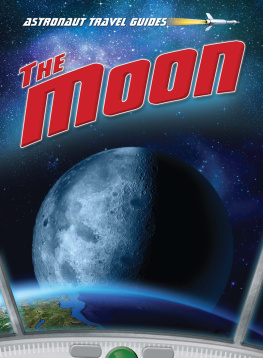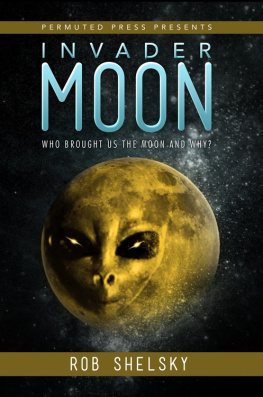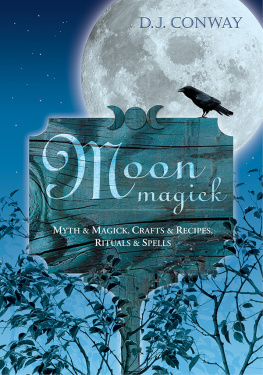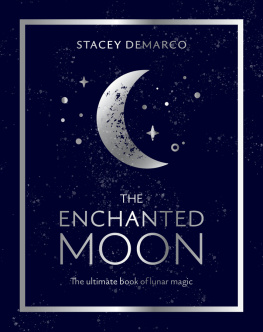Timothy Harley - Moon Lore
Here you can read online Timothy Harley - Moon Lore full text of the book (entire story) in english for free. Download pdf and epub, get meaning, cover and reviews about this ebook. year: 2015, publisher: Createspace Independent Publishing Platform, genre: Science. Description of the work, (preface) as well as reviews are available. Best literature library LitArk.com created for fans of good reading and offers a wide selection of genres:
Romance novel
Science fiction
Adventure
Detective
Science
History
Home and family
Prose
Art
Politics
Computer
Non-fiction
Religion
Business
Children
Humor
Choose a favorite category and find really read worthwhile books. Enjoy immersion in the world of imagination, feel the emotions of the characters or learn something new for yourself, make an fascinating discovery.

- Book:Moon Lore
- Author:
- Publisher:Createspace Independent Publishing Platform
- Genre:
- Year:2015
- Rating:4 / 5
- Favourites:Add to favourites
- Your mark:
- 80
- 1
- 2
- 3
- 4
- 5
Moon Lore: summary, description and annotation
We offer to read an annotation, description, summary or preface (depends on what the author of the book "Moon Lore" wrote himself). If you haven't found the necessary information about the book — write in the comments, we will try to find it.
Moon Lore — read online for free the complete book (whole text) full work
Below is the text of the book, divided by pages. System saving the place of the last page read, allows you to conveniently read the book "Moon Lore" online for free, without having to search again every time where you left off. Put a bookmark, and you can go to the page where you finished reading at any time.
Font size:
Interval:
Bookmark:

From Domingo Gonsales [A.D. 1638]
See page 46.
Goethe's "Faust." Hayward's Translation, London, 1855, p. 100.
SWAN SONNENSCHEIN, LE BAS & LOWREY,
PATERNOSTER SQUARE
1885
BUTLER & TAYLOR
THE SELWOOD PRINTING WORKS
FROME, AND LONDON
"The moon and the stars, which Thou hast ordained."--Psalm viii. 3.
"Who is she that looketh forth, fair as the moon?"--Solomon's Song vi. 10.
"The precious things put forth by the moon."--Deuteronomy xxxiii. 14.
"Soon as the evening shades prevail,
The moon takes up the wondrous tale."--Addison's Ode.
"In fall-orbed glory, yonder moon Divine
Rolls through the dark-blue depths."--Southey's Thalaba.
"Queen of the silver bow! by thy pale beam,
Alone and pensive, I delight to stray,
And watch thy shadow trembling in the stream,
Or mark the floating clouds that cross thy way;
And while I gaze, thy mild and placid light
Sheds a soft calm upon my troubled breast:
And oft I think-fair planet of the night-
That in thy orb the wretched may have rest;
The sufferers of the earth perhaps may go-
Released by death-to thy benignant sphere;
And the sad children of despair and woe
Forget in thee their cup of sorrow here.
Oh that I soon may reach thy world serene,
Poor wearied pilgrim in this toiling scene!"
--Charlotte Smith.
| I | |
| 1 | 1 |
| 2 | 5 |
| 3 | 53 |
| 4 | 60 |
| 5 | 69 |
| 6 | 71 |
| II | |
| 1 | 77 |
| 2 | 82 |
| 3 | 87 |
| 4 | 132 |
| III | |
| 1 | 145 |
| 2 | 152 |
| 3 | 175 |
| IV | 227 |
| 259 | |
| 263 | |
| 285 |
| 1 | Frontispiece |
| From Domingo Gonsales, 1638 | |
| 2 | 9 |
| From Hone's Facetiae and Miscellanies, 1821. Drawn by George Cruikshank. | |
| 3 | 12 |
| (From the Bagford Ballads, ii, 119, Brit. Mus.) | |
| 4 | 13 |
| (Banks Collection in Brit. Mus.) | |
| 5 | 22 |
| From Ludwig Richter's Der Familienshatz, Leipzig, p. 25 | |
| 6 | 28 |
| In the Archaeological Journal for March, 1848, p. 68 | |
| 7 | 32 |
| From Baring-Gould's Curious Myths | |
| 8 | 63 |
| From Colin de Plancy's Dictionnaire Infernal |
I. INTRODUCTION.
Font size:
Interval:
Bookmark:
Similar books «Moon Lore»
Look at similar books to Moon Lore. We have selected literature similar in name and meaning in the hope of providing readers with more options to find new, interesting, not yet read works.
Discussion, reviews of the book Moon Lore and just readers' own opinions. Leave your comments, write what you think about the work, its meaning or the main characters. Specify what exactly you liked and what you didn't like, and why you think so.









